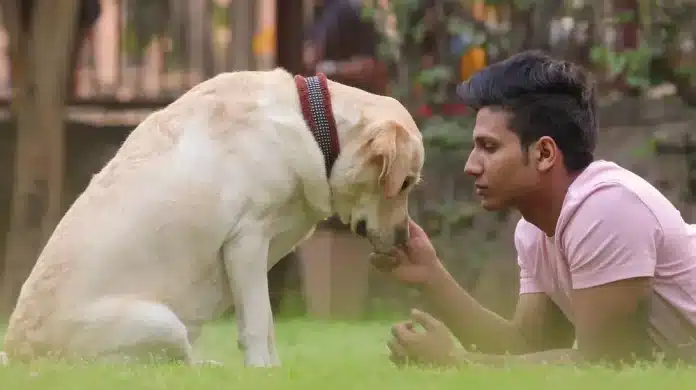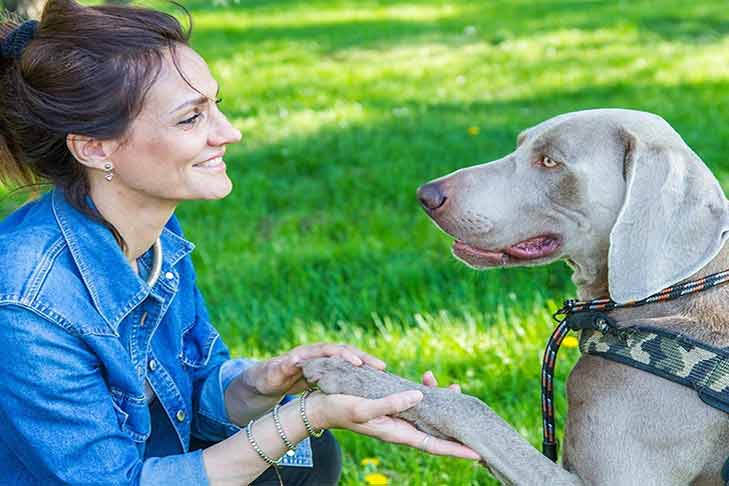Are Dog Translators Real? How Accurate Are Dog Translators? Where Can You Buy Dog Translators? – What are they saying? This is a question that every dog owner has pondered. According to Netflix’s newest science docuseries, The Future Of, the solution to that age-old question may be closer than we think. In an episode that is every pet lover’s hidden dream, “Dogs” analyses the advances being made in the field of animal language.
The Future of, like Netflix’s other futuristic documentaries, follows a straightforward premise. Every episode of the show focuses on a common occurrence in everyday life, such as dating and houseplants, as well as video games. It then delves into the breakthroughs that are hidden in these seemingly routine topics’ near and far futures. How near are we to developing wearables that can determine our romantic compatibility with another person?
Will we ever be able to enjoy holidays in space? Each episode is reminiscent of Black Mirror, as it explores new, well-intentioned technology while avoiding its potentially disturbing repercussions. But, honestly, what do you think? When human-to-dog communication is on the line, it’s difficult to wring your hands and worry about unintended chaos.
As a result, the concept of translators—particularly dog translators, who hold a statistical majority in the kinds of dogs people like around the world—is both fascinating and strange. So, now that Netflix’s ‘The Future of: Dogs‘ has also explored this topic, let’s learn more about the reality, the various types of accessibility, and their prospective purchasing possibilities, should we?
Must Read: Where is the Thanatologist Cole Imperi Now?
Do Dog Translators Work and Are They Accurate?
It’s no wonder that dog translators exist in today’s world, given all of the technological breakthroughs, data collection methods, and simple use of artificial intelligence. Over the years, there have been innumerable publications on pet communication and behavioral patterns, and while dog buttons appear to be the craze right now, translators aren’t far behind. Indeed, a few prototypes and working gadgets for the purpose have existed for nearly two decades, and Google even tried out Translate for Animals in 2011.
While some of the available canine translators rely exclusively on the animals’ bark for interpretation, others consider even the smallest noises, body language, and surroundings. However, due to ongoing study, there are still varying degrees of accuracy claimed, and some web programs go so far as to state they are simply for fun reasons. As a result, actual scientists are already working on such translators, which means we may soon have an exact model to lay out our dogs’ behaviour and feelings in human language.
According to the documentary episode, animal behaviourists, conservation biologists, and Zoolingua’s Founder and CEO are at the forefront of this endeavour to understand dogs. After all, the author of ‘Chasing Doctor Dolittle‘ has spent more than 30 years researching dogs in order to create an AI program (rather than depending on guessing) that can actually understand their behaviour. From tiny interactive indications like sniffs, wiggles, or rolling over to more basic ones like barks, the goal is to correlate every element with sentiments and phrases for the most accurate translation possible.
Where Can Dog Translators Be Purchased?
Of course, Zoolingua and another AI-based dog (or animal) translators aren’t fully functional or accessible on the market yet, but there are several excellent alternatives. BowLingual promises to be able to work with more than 80 dog breeds utilising the Animal Emotion Analysis System (AEAS) technology, which analyses their barks before selecting one of the pre-programmed 200+ phrases to reflect what they mean. The message is sent to a handheld LCD receiver via a wireless device (carefully attached to a dog’s collar). BowLingual is available on both Amazon and eBay.
Then there’s the Anicall app from Japan, which you can download from their website and claims to investigate 40 emotions just through photos to indicate how your pet is feeling — it concentrates on sentiments rather than word aspects. We should also include WhatsYapp, a basic collar that links to your wifi and your smartphone to deliver text messages from your dogs after analysing their body language.
No More Woof is another intriguing high-tech and thus possibly more accurate translator, although it is still in the prototype stage as of this writing. To achieve this purpose, this collar-based one-sensor gadget employs microcomputers, electroencephalogram (EEG) sensors, and a fully novel brain-computer interface software. It is clearly not available for purchase right now, but it is expected to start at around $65.
















